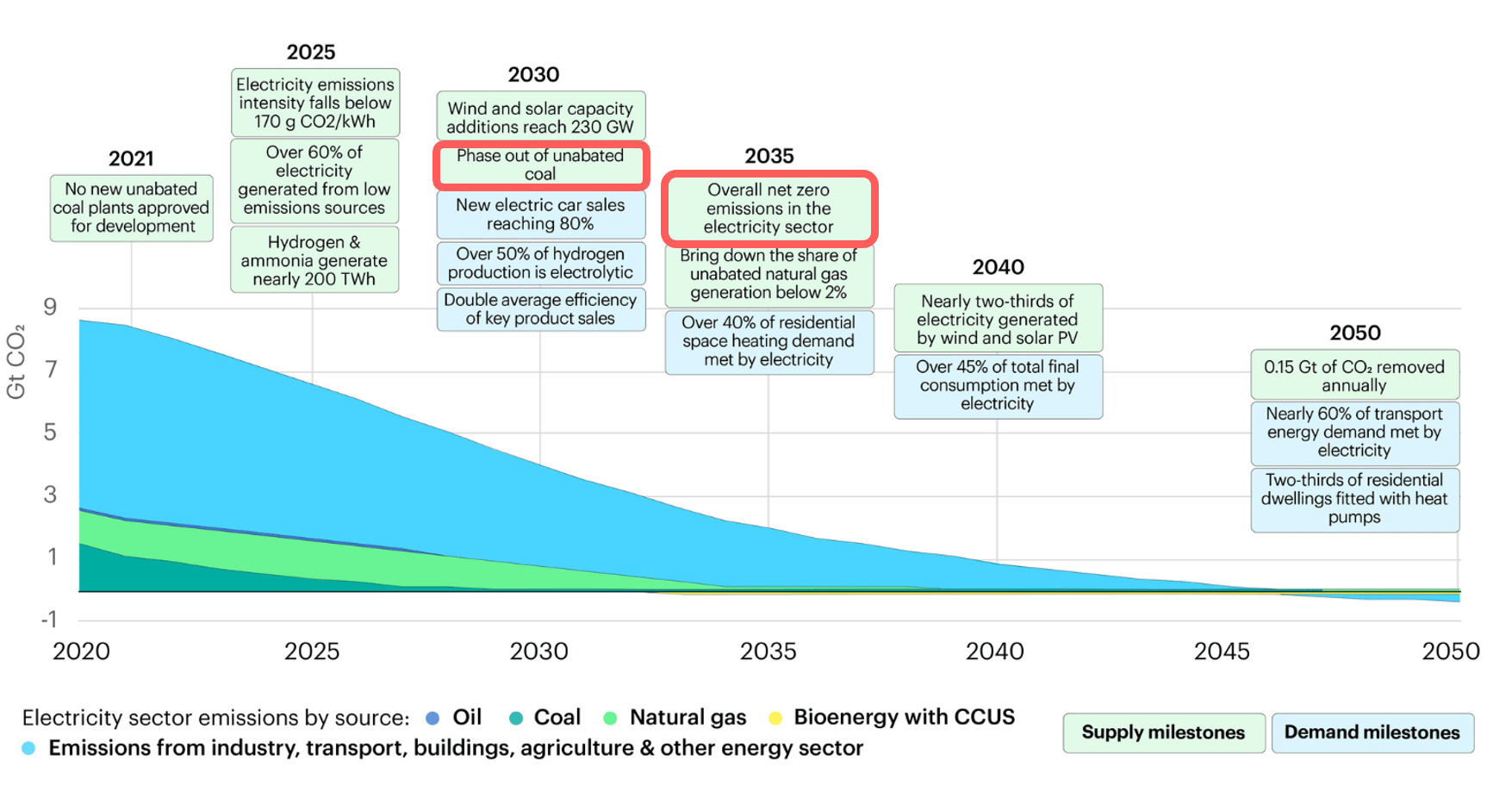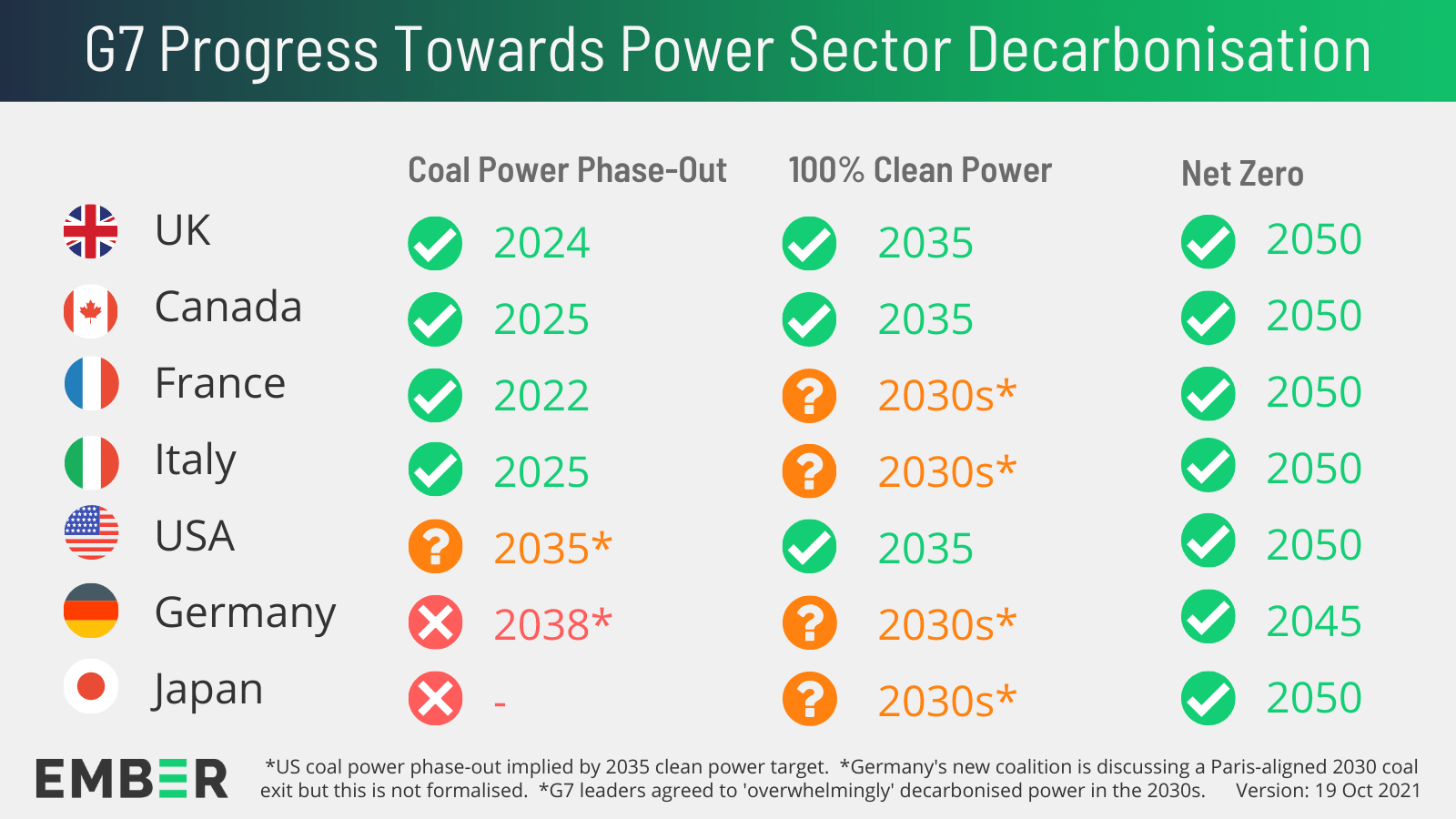
Breadcrumbs
G7 poised to lead the world towards clean electrification
The IEA’s newest report shows that G7 members are well placed to decarbonise their electricity by 2035, helping to unlock the benefits of clean electrification globally.
The IEA is clear that limiting global heating to 1.5C and reaching Net Zero by 2050 is possible – but bold action now is needed, with critical targets in the next ten years. This isn’t a vision of incremental change: it’s a systemic overhaul of electricity generation. But the IEA’s pathway shows the benefits of rising to the challenge: job creation, energy self-sufficiency, and reduced household electricity bills.
There is a daunting gap between where the G7 is currently, and where the IEA shows they need to go. What’s lacking is a plan to phase out gas from the electricity mix in Germany and Italy, credible action from the US to implement Biden’s 2035 clean power pledge, and a step up from Japan which doesn’t have a plan to phase out either coal or gas power as yet.
The IEA’s report shows that there’s no room to contest the scale of the challenge and what’s needed to meet it. The G7 will need to rise to the moment and lead on ambition in order to reach clean power by 2035.






This week’s G7 pathway from the IEA shows why a 2050 net-zero economy needs a 2035 net-zero electricity sector. With lots of progress to celebrate, there’s still a hefty gap between what the G7 has committed to so far, and where they need to be in the next 15 years.
The IEA is not backing down from ambitious milestones, and the message to the G7 is clear: you have a responsibility to fast-track your electricity transition to keep the world on track for 1.5C.